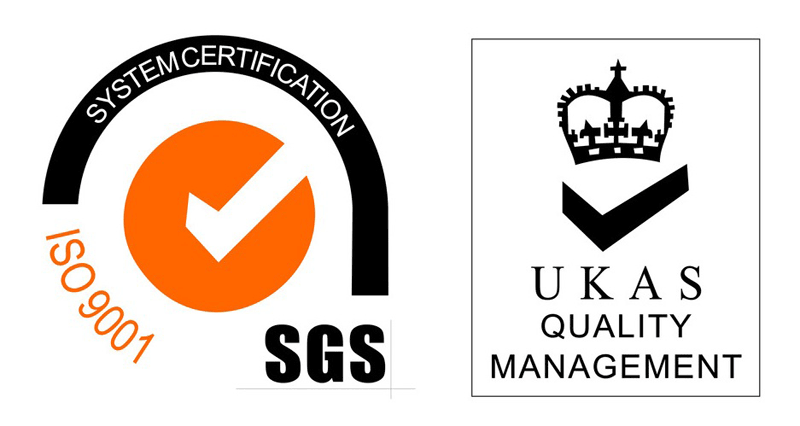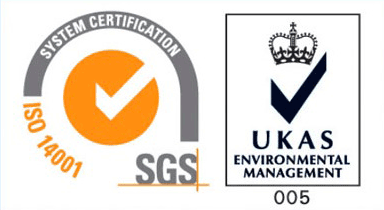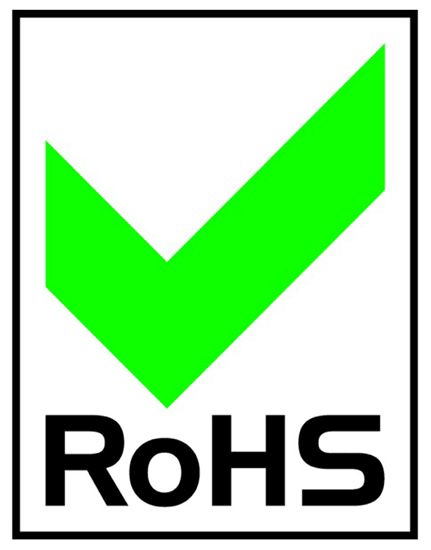MANAGEMENT COMMITMENT
Within the framework of our RoHS Compliance System we commit to:
l Identify materials, products and wastes that either are or are not RoHS compliant, and implement measures to segregate, document and test where technically and economically viable.
l Comply with applicable RoHS and WEEE standards as currently set forth by the EU, environmental laws, regulations, codes of practice, and other environmental requirements. To achieve and maintain compliance, we will develop and maintain the RoHS Compliance management system for identifying relevant requirements and for monitoring performance of related activities.
l Continually enhance and improve the RoHS Compliance System to ensure that it is appropriate and effective for helping us to achieve our RoHS compliance goals.
l Provide all economic, equipment, and management resources necessary to maintain RoHS compliancy.
  
Determining RoHS Compliance
Our Receiving procedures include:
l Initial identification/verification (documented procedures available upon request)
l Documentation
l Continual training
l Support for our Receiving Team, provided by:
l A Liaison with semi-conductor companies.
l Security measures to prevent cross-contamination, and ensure proper designation
throughout the inventory management system).
l In house Component Composition Specialists.
Inventory Management Systems
l Within our Inventory Management Database, data fields are provided to represent the various states of RoHS / Pb Free compliance.
l Documentation Database: This field signifies that documentation exists to justify the compliance find under RoHS and Pb Free directives. Users will not be able to enter a state character unless a document is present and attached to the line item.
l Accessibility: Access to create a RoHs / Pb Free compliance state is controlled and strictly limited.
Due Diligence-No Stone Unturned
RoHS Testing and Verification
l Testing processes are set in place to verify parts are actually RoHS compliant, beyond all reasonable doubt.
l We have proper methods in place to verify that the chemical composition is within RoHS standards.
l As components are tested, results are documented for cross-referencing.
WEEE - CRADLE TO GRAVE
Our years of expertise in the area of Reclamation enable us to ensure that:
l All electrical and electronic equipment scrap is collected, separated and recycled in an environmentally responsible manner and in accordance with the WEEE initiative.
l Incoming receipt of material is identified, coded, and separated when added to our system as stock.
l Testing is done when necessary to determine content in materials.
l If it can be reused, it is separated and placed into inventory for resale.
l If it is scrap, material is dismantled, and sorted by commodity for recycling.
l Certificates of Destruction are provided for scrap material.
l Revenue share programs are available on returns from metals or the resale of components.
l Documentation on the disposition of all materials ensures compliance with WEEE.
THE PROCESS
l Global locations will follow the policies, procedures and methods documented in the Exeter, NH location.
l Customer access is available 24/7 online through Bopteq's website.
l Documentation of any customer or government deviations is processed.
l Accurate data is maintained and verified foe Certificates of Compliance.
l Bopteq's documentation of RoHS and WEEE process and procedures are considered proprietary IP and remain in house. They are available for customer viewing and/or inspection, at Bopteq' office location.
l RoHS and WEEE compliance is dependent on proper disposition of excess, obsolete and scrap materials, to close the loop in the manufacturing process.
l Continue to improve procedures to maximize efficiencies and returns.
| 
